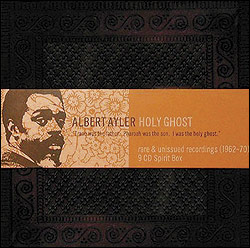Singles used to be the trial balloon of the music business; now the song-or-two format is an allusion to the days when the most exciting new pop did appear first without an album surrounding it. Pixies‘ “Bam Thwok” (currently available only through iTunes), for instance, is less a classic “here we are at our best” single than a new song meant to indicate that the Pixies are back, and that there’s more to them than the 15-year-old songs they’ve been playing live. Written and sung by Kim Deal, it’s curiously more in Black Francis’ native style than Deal’s own, with a handful of gimmicks (a three- bar-long riff in the chorus, a single bass note repeated for ages under the verse) that he used over and over during the Pixies’ original existence. It’s essentially a tiny little song—if they were as ruthless about concision as they once were, they’d quit around the 1:20 mark, but they tack on a strange break with an out-of-synch organ, then repeat themselves to pad it out to something more like single length.
The point of Belle & Sebastian‘s “Your Cover’s Blown” is exactly the opposite of the Pixies’: They’re trying not to sound like themselves. Originally intended as a B-side for Dear Catastrophe Waitress‘ “Wrapped Up in Books” and ultimately upgraded to “co-A-side” of the Books EP (Rough Trade), it starts with a section arranged in the style of early-’80s street funk—drum-machine hand claps, a mosquito-ish keyboard whine, squelchy synth-bass, the works—then moves through a few other groove-music idioms, stopping to indulge a brief imitation of singer Stuart Murdoch’s favorite ’60s band, Love. But Murdoch blows his own cover. As soon as he starts singing, it’s apparent that the song was conceived in his own four-square, gently jangling, word-heavy idiom—that the natural form of “Your Cover’s Blown” actually would sound like your standard Belle & Sebastian tune. Even so, the result’s pretty fascinating, and the band sounds like they’re having a great time wearing this particular Halloween disguise.
Yoko Ono started rereleasing her old songs in club-friendly remakes and remixes a couple of years ago, as ONO. The first few times, it just seemed like a weird but refreshing idea: a septuagenarian avant-garde artist with a dance hit, neat! By now, though, she’s actually become a staple of the dance circuit—as of this writing, her “Hell in Paradise” is in the Billboard Club Play chart’s top five—and she’s followed it up by remaking “Every Man Has a Woman Who Loves Him” (Mind Train/Twisted), this time calling it “Everyman . . . /Everywoman . . . ” Ingeniously, the new version comes in three versions: one with the familiar lyric, and two retooled to replace “woman” with “man” and vice versa. (It’s unclear if Ono even rerecorded her vocals; they’ve been run through Autotune—the Cher/”Believe” effect—till they almost sound like they’re coming out of some kind of Yokophonic Bot.) Basement Jaxx’s “Man2Man” and “Woman2Woman” mixes preserve almost every element of Ono’s early-’80s original, but coat it in the same combination of chrome and confectioner’s glaze that they use on their own records, enhancing it with wet little synthesizer chirps and undulating beats.
If Swedish synth-pop trio Revl9n (as they’re now known—perhaps a cosmetics company wasn’t too happy with their old name Revlon 9) had been around 20 years earlier, they would have shown up on MTV every few days. Their new single “Walking Machine” (C.B.H.) has the plastic perkiness of the Bananarama and Animotion songs to whose ranks it aspires. As enthusiastic and dense with detail as the band’s performance is, there’s something about the song itself that seems unfinished: The verses go from rhyming to not rhyming to not even finishing each phrase, and the arrangement’s keyboard sounds are barely enough to cover up for the two-note melody. When Revl9n get to the hook—”She said I like it better when it hurts/She said I don’t wanna be a walking machine”—everything falls into place so smoothly that Nina Blackwood’s astral form nearly materializes above the stereo to shower down blessings. But then they forget what they’re doing again, as the chorus disintegrates like an old plank in a lake.
The packaging for the late British songwriter Nick Drake‘s “Magic” (Island U.K.) looks like a facsimile reproduction of a single from 1968, when Drake sang it. That’s a bit of nostalgia for a moment that never happened; “Magic” is Drake’s first-ever single. Back when the song was called “I Was Made to Love Magic,” it was an outtake from his first album. (It finally appeared on a posthumous album of Drake miscellany, Time of No Reply.) For the new version, Drake’s voice has been digitally lifted off the old recording, sped up, and reset to his old collaborator Robert Kirby’s newly recorded strings-and-flutes arrangement. “Nick played ‘Made to Love Magic’ on guitar or piano, but I had orchestrated it for solo voice and orchestra,” Kirby writes in his liner notes to Made to Love Magic (Island), the new collection on which “Magic” appears. So it’s debatable at best that this is “the song as Nick intended it to be heard,” as the compiler’s notes claim. And even though Kirby’s arrangement really is better, there’s a ghostly disjunction between Drake’s voice and the new instrumentation that falls shy of the fastidious elegance of the recordings he completed in his lifetime.








